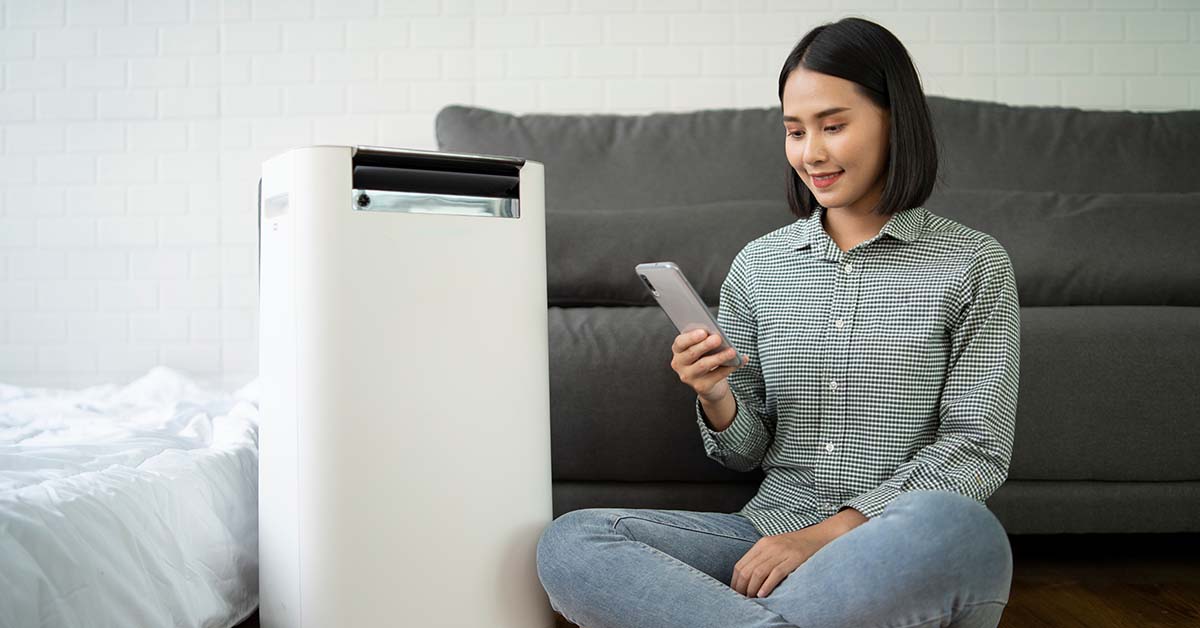Air purifiers may help to improve indoor air quality and protect you from allergens, pollutants and harmful gases and improve indoor air quality. If you have been doing some research to help you choose and buy air purifier, you might have come across many confusing different air filter rating systems and terminologies. This confusion makes it difficult to know which rating system you can trust. In this article, we will touch on the different air filter rating systems used in the air purifier industry so that you can make an informed decision when buying an air purifier.
Clean Air Delivery Rate (CADR)
Developed by the US Association of Home Appliance Manufacturers (AHAM) in the 1980s, the Clean Air Delivery Rate (CADR) rating system is intended to help consumers navigate the claims made by air purifiers when they want to buy air purifier. CADR is a standard represented by a numerical value that allows consumers to measure the effectiveness of stand-alone air purifiers (should not be used for whole-house systems). However, it has a number of weaknesses that limit its usefulness.
Firstly, CADR only tests performance for no more than the first twenty minutes of the air purifier’s operation. However, many air purifiers may lose efficiency after one hour of usage. Thus, the CADR rating provides no basis for evaluating the long-term performance of an air purifier.
Secondly, CADR does not test performance against ultrafine particles. These are particles that are smaller than 0.1 microns, but make up more than 90% of all particles in the air. Ultrafine particles also pose the most health risk. Unfortunately, not all air purifiers in the market are able to filter ultrafine particles effectively.
Thirdly, CADR does not test effectiveness for filtering of harmful gases, chemicals, and odours.
Lastly, CADR does not distinguish whether an air purifier eliminates particles from the air, or simply deposits them on room surfaces. This is a critical point to note as this is how air purifiers that uses ionisation work. In fact, the U.S. Environmental Protection Agency (EPA) had warned that ion-generating air purifiers may increase the risk of particles being deposited into your lungs.
For these reasons, some manufacturers do not consider CADR to be a suitable methodology for evaluating air purifiers and do not participate in the rating program.
Ratings Based On Room Sizes
Room size ratings are derived from CADR ratings. A CADR rating multiplied by 1.55 will provide the rating for the room size limit an air purifier can handle. This calculation is based the assumption of a ceiling height of 8 ft. However, since this rating system is based on the CADR rating system, it inherits similar methodology flaws.
HEPA Filter Rating
HEPA stands for High-Efficiency Particulate Air. The term refers to the type of filter technology, and also to the efficiency standard. HEPA filters work in mechanical air purifiers and are made with randomly arranged micro-glass fibres or speciality synthetic fibres. To qualify for the term “HEPA”, the filter must be capable of capturing 99.97% of particles as small as 0.3 microns. However, there are many different “HEPA” labels used by manufacturers, including “True HEPA”, “HEPA-type”, “99% HEPA”, “HEPA-like” and “HEPA-style.”
“True HEPA” is a term marketers coined to indicate that the filter meets the strict standards being able to capture 99.97% of particles as small as 0.3 microns. Other terms like “HEPA-type”, “HEPA-like”, “99% HEPA” and “HEPA-style” may likely imply that the filters do not actually meet these standards.
There are some important caveat to note however, regarding HEPA-labelling:
- There is currently no requirement for household air purifiers to be tested to meet HEPA standards.
- There are no regulations governing the testing for “HEPA” performance standards, or for the use of the term “HEPA” when labelling products.
- Some manufacturers may use the term “HEPA” loosely to give their products a more positive image in a bid to bet consumers to buy air purifiers from them.
Summary Of Air Filter Performance Ratings For Buying Air Purifier
When buying an air purifier, it is essential to understand the different air filter rating systems and terminologies to make an informed decision. The Clean Air Delivery Rate (CADR) rating system has weaknesses that limit its usefulness. Room size ratings are similarly problematic because they are based on CADR ratings. “True HEPA” labelling indicates that the filter meets the strict standards set by the U.S. Department of Energy, but caution must also be exercised when relying on this rating system as there are no robust testing and labelling requirements by law for the usage of the “HEPA” label.
Further Reading On Indoor Air Quality
Protect against cancer, cardiovascular disease, and other chronic diseases with regular health screening. Compare and shop for health screenings from Singapore and regional healthcare providers at a single convenient platform - shop.health365.sg
This article is informative only and is not intended to be a substitute for professional medical advice, diagnosis, or treatment, and should never be relied upon for specific medical advice.






